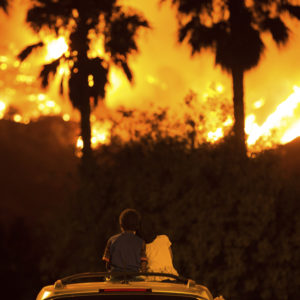In the aftermath of the California wildfires, we are still learning about the tragedy’s widespread devastation and health effects, including water contamination. Confusion abounds as to the sources of that contamination and how best to abate it. One thing is for certain, however: The benzene found in California’s water isn’t from burned PVC pipes.
Some reports have recently repeated the unsubstantiated claim that PVC pipelines may have contributed to the detection of benzene in California municipal water systems. The science says otherwise: There is no evidence of PVC producing benzene in an open-air fire, like the Camp and Tubbs fires.
Sure, there is some evidence that PVC can produce benzene in a process known as pyrolysis. Pyrolysis occurs when PVC is heated in a highly controlled environment in which air is completely absent. However, wildfires occur above ground and in the open air — that simply is not pyrolysis. Since PVC does not produce benzene in open-air combustion, PVC pipes could not have emitted the benzene found in the cities’ water.
Why do these claims persist when the science doesn’t support them? One is confusion: PVC isn’t like other plastic-based pipes, and lumping them all together ignores PVC’s inherent differences (and benefits). On a larger scale, some activists often put ideology ahead of science, and it’s no different in the case of PVC. Many eco-activists blanketly oppose the manufacture of chemicals and plastics as part of a broader agenda, and tragic events serve as opportunities to spread fear about otherwise properly used chemicals, a fear known as chemophobia. Such misleading tactics threaten to derail the education necessary to understand tragic events like wildfires and the threats they pose to human health and the environment.
After all, in a wildfire, the greatest threat of harmful air pollutants, including benzene, comes not from manmade materials but from burning wood itself. The most likely source of benzene contamination in municipal water systems after a fire is not from melting pipes or burning pipes, but from outside contaminants entering the system via damaged service lines, which connect buildings to the water main.
When a house or business is burned, the service lines that connect it to the water system will be burned, broken or melted — creating gaps where foreign contaminants can enter. As water in the system is used to fight the fire, suction draws in those foreign contaminants. This problem would persist regardless of the pipe material used — its a matter of physics, not chemistry.
The Centers for Disease Control recognizes forest fires as a common source of benzene. The U.S. National Library of Medicine similarly writes it “is produced naturally by volcanoes and forest fires.” In other words, water infrastructure has little to do with the commonality of benzene production in forest fires.
Some critics claim that benzene can be leached through the plastic pipes after it has accumulated in the soil and in the environment. But not all plastic pipes are the same. PVC pipe is highly resistant to permeation to a wide range of chemicals, including benzene. Some materials may suffer from this problem, but PVC does not.
Metal pipes aren’t much of an alternative either: ductile iron pipe (the current standard) is just as susceptible as PVC to the kind of foreign contamination described above. However, ductile iron pipe uses certain chemical coatings to reduce corrosion and other damage to the pipe. In the event of a fire, those flammable coatings can cause a loss in system integrity, making it more likely for the ductile iron pipe to fail prematurely. While both PVC and ductile iron are resilient in their ability to protect public health with safe drinking water, neither will hold up to the power of a wildfire, and it is far more affordable to replace the PVC pipes that are affected by a fire event.
Californians have suffered greatly from the Camp and Tubbs fires, and their hardship has been compounded by the added harm of water contamination and infrastructure damage. Knowing the true source of that contamination should help city officials and the greater public move forward with remediation, and capable of rebuilding with the right materials.

